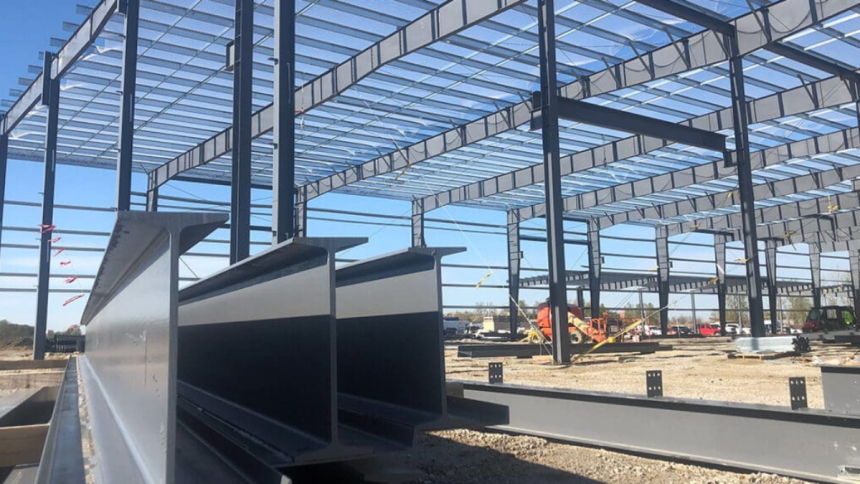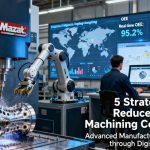INTRODUCTION:
Offsite construction has emerged as a transformative approach for commercial building projects, offering faster timelines, predictable costs, and enhanced quality control. Unlike traditional onsite construction, offsite methods involve fabricating modules or components in a controlled factory setting before transportation and assembly at the site. This shift reduces weather delays, workforce management issues, and supply chain variability—all common pain points in commercial builds.
In addition to logistical benefits, offsite construction offers financial predictability and increased sustainability. Developers appreciate reduced waste, lower risk exposure, and enhanced worker safety. As businesses demand faster and smarter delivery methods, offsite construction positions commercial projects for efficiency, resilience, and innovation. This article explores the multiple benefits of this approach, from design flexibility to digital integration.
Faster Delivery Times:
Offsite construction significantly accelerates project timelines by enabling parallel processing—while foundations or site prep occur, building components are being manufactured simultaneously. This overlap can dramatically shorten schedules, sometimes by 30–50%, making it ideal for commercial developments where time equals revenue.
The factory setting also eliminates weather-related delays and supplier interruptions. With consistent production workflows and buffered inventory, commercial schedules become far more reliable. This consistency matters for businesses with tight occupancy timelines, such as office spaces, hospitality venues, or retail outlets.
Parallel Workflow Advantages:
- Site preparation and module fabrication happen concurrently
- Real-time project milestones accelerate cash flow
- Reduced idle time for subcontractors and suppliers
By overlap rather than sequence, projects realize dramatic time savings without sacrificing coordination.
Improved Quality and Precision:
Factories offer an environment where conditions are optimized for quality: stable temperatures, precise tooling, and standardized inspection protocols. Commercial modules built offsite exhibit consistent finishes, tighter tolerances, and superior performance than onsite assemblies.
This precision matters in commercial applications—office acoustics, MEP alignment, airtight building envelopes, and visual fidelity can all be better controlled. Moreover, quality assurance protocols can be embedded throughout the production process, increasing durability and reducing maintenance costs over the building lifecycle. – Danny Cesar, Swiftbooks
Cost Predictability and Reduced Risk:
Financial planning is more reliable with offsite construction, as factory-based manufacturing costs are comparatively fixed. Bulk purchasing and streamlined labor schedules eliminate many variable elements that inflate budgets in traditional construction.
Moreover, the risk of change orders and onsite errors is minimized. By moving complex assembly offsite, unforeseen conditions like weather or material defects are detected earlier and addressed in controlled environments. This risk mitigation delivers better budget control and fewer disputes—critical in commercial contracting.
Financial Risk Mitigation Through Standardization:
- Pre-defined scope controls change orders
- Cost modeling at module level enhances transparency
- Warranty tracking starts at the factory, improving long-term accountability
Clear cost models and consistent quality create trust for clients and investors alike.
Enhanced Safety and Worker Conditions:
Onsite construction often involves elevated work, inclement weather, and irregular labor conditions—each contributing to safety risk. Offsite factories, in contrast, offer controlled environments with proper ventilation, lighting, machinery, and safety protocols in place.
This reduction in hazards lowers insurance premiums and liability exposure. Moreover, it improves labor retention and morale, as factory work typically offers greater predictability and comfort than fluctuating field environments.
Design Flexibility and Customization:
Contrary to misconceptions, offsite construction supports a broad range of design outcomes. Factory production can accommodate customized finishes, integrated MEP systems, and tight architectural aesthetics. Modules and panels can be tailored for corporate branding, high-end finishes, or specialized functions.
Advanced production techniques such as CNC milling, laser cutting, and prefabricated MEP systems enable highly detailed components within efficient workflows. This ensures that commercial projects maintain design integrity while benefiting from the advantages of offsite delivery.
Sustainability and Environmental Benefits:
Offsite construction inherently reduces material waste through optimized ordering, assembly guide precision, and recycling processes. Factories can capture and reuse offcuts and packaging, leading to significantly lower construction waste than traditional sites.
Furthermore, fewer site deliveries and faster timelines decrease carbon emissions from transport and temporary power usage. This eco-friendly profile aligns with commercial ESG goals and green building certifications, increasing appeal to tenants and investors focused on sustainability.
Streamlined Supply Chain Management:
Centralized production in factories simplifies material coordination by bundling procurement, sequencing, and on-time delivery. This contrasts with fragmented site orders that require constant oversight. With offsite methods, suppliers and sub-contractors synchronize to a master schedule and production plan.
Clear sequencing reduces material overruns, delays, and disputes. Commercial developments benefit from visible logistical clarity: from concrete panels and steel frames to integrated electrical and plumbing systems, every component arrives when and where it’s needed.
Logistics Optimization Strategies:
- One-time delivery of modular assemblies reduces truck traffic
- Centralized staging minimizes storage and damage
- Pre-shipment quality checks ensure completeness
A centralized build pipeline enables reliable staging and site coordination for large-scale commercial sites.
Integration with Digital Technologies and Data Tools:
Digital platforms are indispensable in managing offsite construction at scale. Virtual coordination tools, 3D/BIM models, and scheduling dashboards help align designers, fabricators, and site teams. Cloud systems maintain version control, documentation, and real-time issue tracking.
Additionally, systems like microsoft fabric solutions for business support data integration across teams, enabling unified planning, analytics, and performance measurements. These tools provide visibility from design through delivery—ensuring decisions are driven by accurate, timely information.
Enhanced Client and Tenant Experience:
Commercial clients value predictability and quality—offsite construction delivers both. With aggressive but reliable timelines, clients can plan move-ins and operations with confidence. Plus, modular finishes often surpass site-built performance, improving tenant satisfaction.
Post-completion, offsite-built commercial units are easier to adapt for custom requirements, lease changes, or reconfiguration. The consistency of module construction translates into faster refurbishment cycles—supporting dynamic tenant needs and reducing downtime.
Tenant-Centric Flexibility Offers:
- Plug-and-play interior fit-outs
- Modular add-ons for scalability
- Consistent performance across lease profiles
Versatility and speed help owners maintain occupancy and respond to changing tenant demands.
Scalable Construction Models for Large Portfolios:
Offsite construction becomes particularly valuable when handling multiple buildings across a portfolio. Production repetition increases cost efficiencies, and standardized modules allow for catalog-based expansion.
Rather than customizing each project from scratch, developers can establish design templates, quality standards, and factory workflows. This scalability reduces planning cycles and execution costs over time—a strategic advantage for commercial property holders. – Alex Taylor, Ichessed
Conclusion:
Offsite construction provides a comprehensive suite of benefits for commercial projects—accelerated timelines, enhanced quality, cost control, safety, sustainability, and client satisfaction. Its compatibility with intelligent digital systems and adaptability to custom designs makes it a viable alternative to traditional methods.
As market demands shift toward speed, efficiency, and resilience, offsite construction will continue to gain traction. Proper planning, design integration, and technology enablement ensure that commercial developments remain both innovative and profitable in the years ahead.
Lynn Martelli is an editor at Readability. She received her MFA in Creative Writing from Antioch University and has worked as an editor for over 10 years. Lynn has edited a wide variety of books, including fiction, non-fiction, memoirs, and more. In her free time, Lynn enjoys reading, writing, and spending time with her family and friends.















